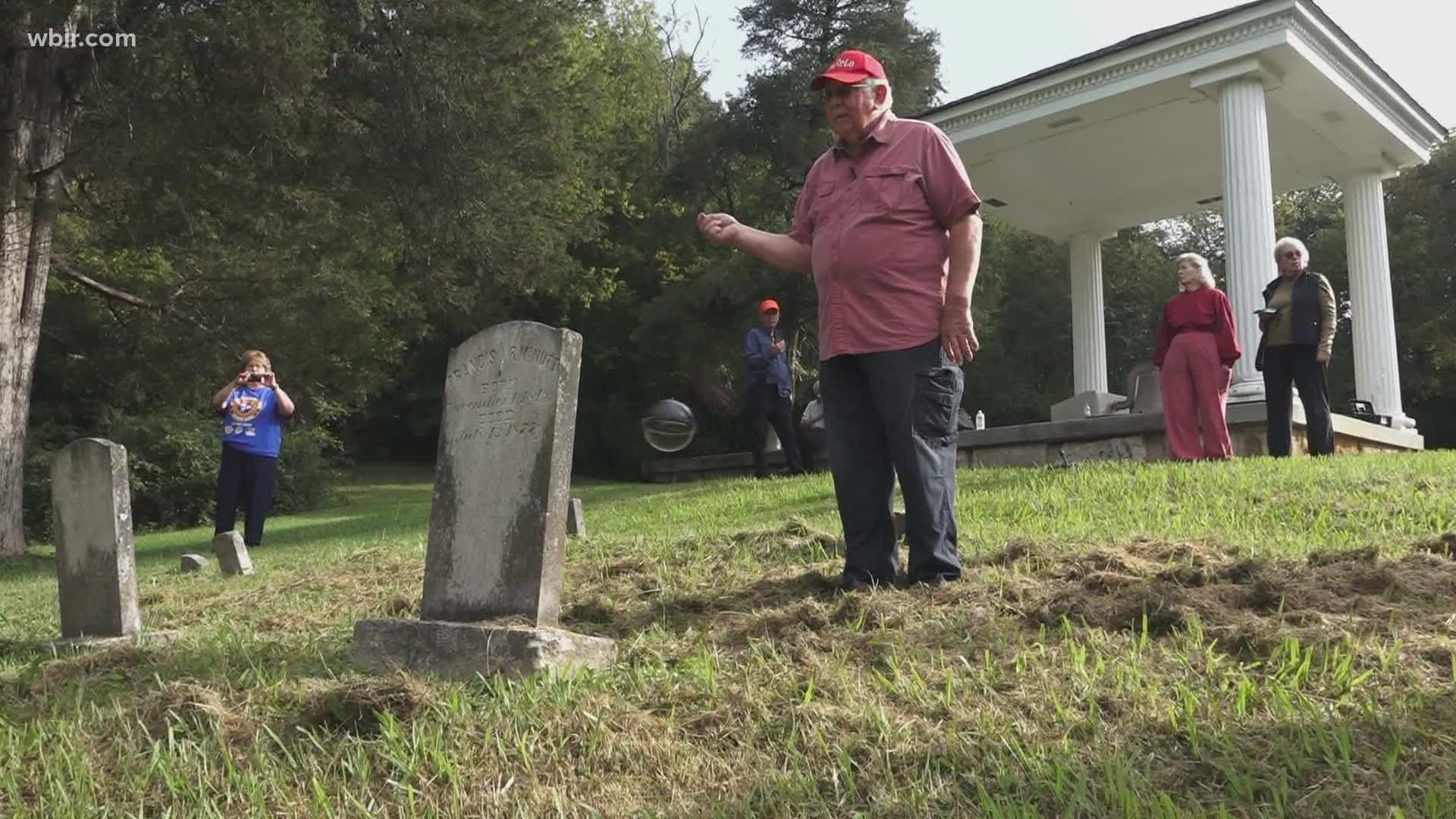KNOXVILLE, Tenn. — An East Tennessee inventor said his new device may help forensic investigators do the hardest part of their jobs — finding more bones.
He said that the device can find bones buried in unmarked graves, even if those remains are centuries old. Art Bohanan, a forensic investigator who created the device, gave it a simple name: The Human Remains Locator.
He showed it off in one of Knoxville's oldest cemeteries, combing through the brush to find bones deep beneath his feet. The device uses technology similar to how dowsing rods are meant to work, responding with swinging oscillations whenever it is pointed in the direction of an unmarked grave.
"There's nothing over here between them, but when you move it back over here, it's an instant response," said Bohanan while combing through the cemetery.
He also said a second orb-like tool that hangs from a fishing line can help him determine whether remains are male or female. If the orb moves clockwise, the remains are female. If it moves counter-clockwise, they're male, he said. The size of the circular movement helps determine the age of the remains.
Critics dismiss dowsing and related practices as quackery that can mislead the public and build false hopes for families trying to find lost loved ones.
Arpad Vass, a scientist and forensic anthropologist said. Bohanan is "using antenna to determine or find and locate that electric field that’s associated with bone."
Vass has developed his own device to find specific people — and other material. He said that it searches for specific frequency waves to find sites where remains could be buried.
His "Quantum Oscillator" works by placing a piece of someone's DNA — a tooth or a lock of hair, for example — inside a frequency-blocking chamber in the base of the device. With the help of technology inside the device, it uses frequency waves to probe the environment around to find a match.
He said his patented device works over great distances — up to 75 miles — and can be used to find other objects besides people.
"It’s not always a person, it could be a goldmine, dinosaur bone, whatever I am looking for at that moment," he laughed.
"All the doubters out there, they can doubt all they want," Vass said. "I mean, go get a patent and see how hard that is."
He said it has the potential to revolutionize forensic science. But for now, both devices are tools to help forensic investigators find missing people.
"My instrument, Art [Bohanan]’s instrument, they’re all out there part of the toolbox. And nothing works 100% all the time and you need to have fall back and that’s what this is designed to do," Vass said.

